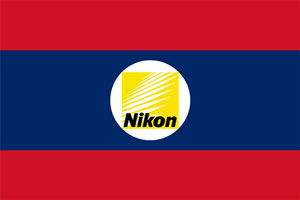Nikon, world’s second largest camera maker behind Canon, has inaugurated its newest DSLR manufacturing facility in Savan-Seno, a Special Economic Zone (SEZ) in the Southeast Asian nation of Laos. The grand opening on Sept. 23, 2013, laid the foundation for cheaper camera production costs. Just don’t hold your breath for DSLR prices to come down. Hopefully for Nikon, reducing costs translates into increasing profits. Nikon, profits? And no, it doesn’t remain to be seen whether build quality will increase or decrease. Whoever claims emerging markets aren’t able to match Western production standards has slept away globalization.

The Laos plant is to reinforce Nikon’s DSLR manufacturing organization. Main objectives, however, are cutting down costs, minimizing political risks and reducing workload of its employees in Thailand. Nikon will produce entry-level and mid-class DSLR cameras in Laos while higher-end equipment will continue to be manufactured in Thailand and other factories.
A Nikon executive told the Bangkok Post the company was confident in the supply of qualified workers. The factory needs 800 to 1,000 workers this year and is expected to employ 2,000 people by next year.
Nikon studied the labor supply in Savannakhet before making a decision. Laos’ labor laws stipulate that at least 70% of the total workforce must comprise local hires, while up to 30% can be foreigners. Of this 30%, not more than 10% should be laborers, while up to 20% may be foreign technical staff — hopefully Japanese and Thai technicians telling their new colleagues how to properly produce fine camera components.
The city of Champhon where the plant is located has a working population of some 62,000 people whereof 10,000 already migrated to Thailand for work. For investors though Thailand is not too attractive anymore due to ongoing political instabilities, an increased minimum wage and corruption-ridden authorities whose disastrous decisions were even jointly responsible for the capital, industries and large parts of the country being flooded.
Says the Nikon executive:
The minimum wage is the issue for us. Floods in Thailand were another concern.
Meanwhile, a Japanese supplier has already bought land near Nikon’s plant — as a sign that other companies are looking for more profitable and promising frontier markets.
Nikon’s investment into the new facility in the People’s Republic of Lao is around $6.3 million.


